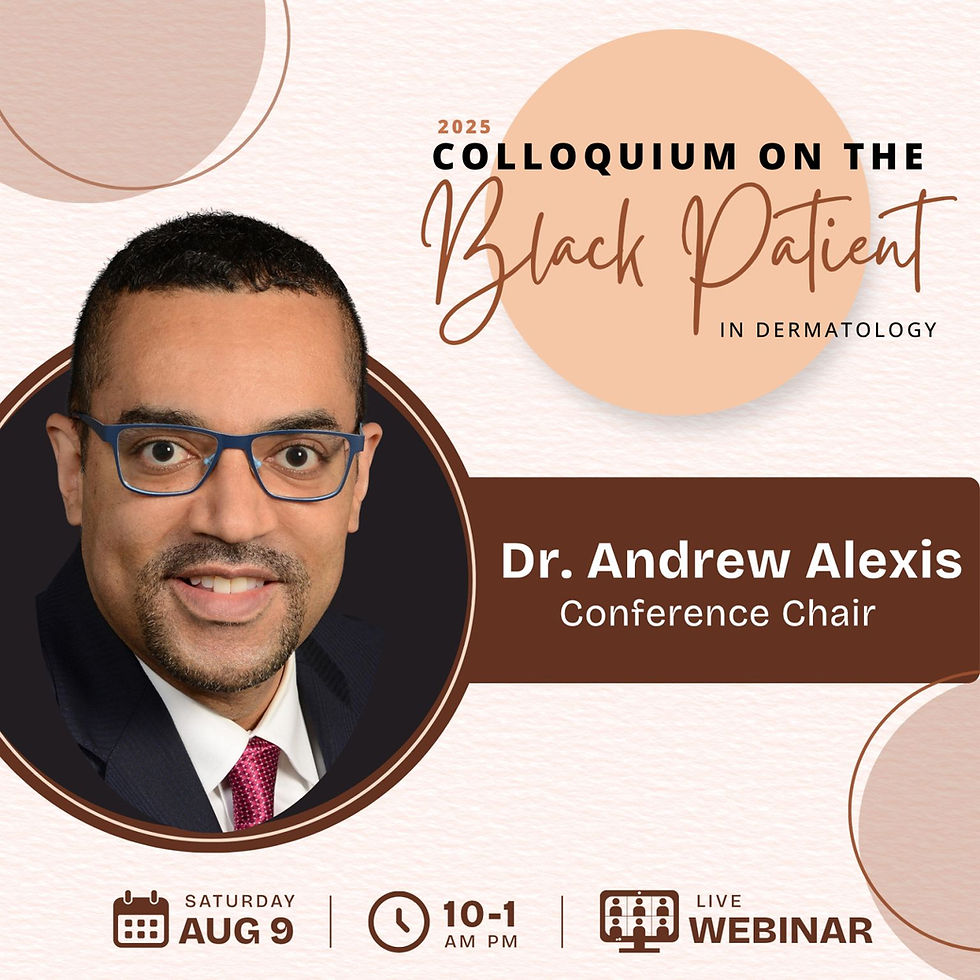SSS 2017: New agents, combinations may be the future for melasma treatment in skin of colour
- by John Evans, Associate Editor
- Apr 8, 2017
- 3 min read

Dr. Heather Woolery-Lloyd speaks at the third annual Skin Spectrum Summit in Toronto on Apr. 8, 2017// photo by Emily Innes-Leroux, The Chronicle
Combination therapy with a range of lightening agents—and possibly oral agents for photoprotection—may become the new gold standard for treating hyperpigmentation in skin of colour. That development is in response to a growing need for an alternative to hydroquinone (HQ), according to Dr. Heather Woolery-Lloyd, director of Ethnic Skin Care, and voluntary assistant professor at the Department of Dermatology and Cutaneous Surgery, University of Miami Miller School of Medicine in Miami.
She spoke during the third annual Skin Spectrum Summit in Toronto on Apr. 8, 2017 and addressed some of the challenges in treating hyperpigmentation in darker-skinned individuals using HQ. She also outlined some of the alternative approaches that can be utilized to reduce the usage of HQ and improve patient outcomes.
While HQ is a highly effective bleaching agent, and 2 to 4% formulations are commercially available, compounded formulations of up to 6 to 10% may be needed in darker-skinned patients, said Dr. Woolery-Lloyd.

Drs. Jonathan Shapero, Andrew Alexis, and Heather Woolery-Lloyd speak at during the case studies session at the third annual Skin Spectrum Summit// Photo by Emily Innes-Leroux, The Chronicle
She noted that HQ can be irritating and can result in ochronosis in some cases.
In response to these limitations, a number of studies have been conducted assessing alternative lightening agents.
A study comparing dioic acid 1% vs. HQ 2% over 12 weeks in 96 Mexican women with melasma found no significant difference in efficacy, although there was less pruritus with dioic acid.
A four-month study comparing the anti-androgen agent flutamide in a 1% cream to HQ 4% in 74 patients with melasma found a significantly better reduction of Melasma Area and Severity Index (MASI) scores in the flutamide 1% group.
An eight-week, split face study comparing niacinamide 4% cream to HQ 4% cream in 27 melasma patients found 44% experienced good to excellent improvement on niacinamide, while 55% experienced the same improvement with HQ. However, only 18% of patients on niacinamide experienced side effects compared to 29% using HQ.
Another study in 90 patients with melasma evaluated photographic improvement—improved, no change, or worsened—from treatment with HQ 4%, or either 2% or 4% formulations of liquiritin, a liquorice extract. Some 73.3% of patients treated with HQ improved over the eight weeks, vs. 96.7% on liquiritin 4% and 86.7% on liquiritin 2%, with no recorded side effects in any group.
A 16-week, split-face study in 16 women with melasma comparing 4% HQ cream to 5% ascorbic acid reported a 93% good to excellent subjective improvement on HQ, and a 62.5% good to excellent improvement with ascorbic acid. However, no statistical differences were seen in colorimetry, and there were 11 side effects on the HQ-treated face halves compared to just one on the sides treated with ascorbic acid.
When 4% HQ and 20% azelaic acid creams were compared in 29 patients over eight weeks, MASI scores improved in both groups, but the improvement was significantly better with azelaic acid.
In addition to speaking on methods for treating hyperpigmentation, Dr. Woolery-Lloyd also described the role of photoprotection in maintaining the improvements in skin colouration. She highlighted the impact of visible light in pigmentation in skin of colour.
The data she presented showed that not only can visible light produce darker and more sustained pigmentation in skin types IV through VI than that produced by ultraviolet (UV) light, but when used in conjunction with 4% HQ for the treatment of melasma, patients who used sunscreens that blocked both visible and UV light had greater improvements in MASI, colorimetry, and melanin measures than those who used sunscreens that blocked only UV light.
Learn more about the Skin Spectrum Summit at www.skinspectrum.ca.




Comments